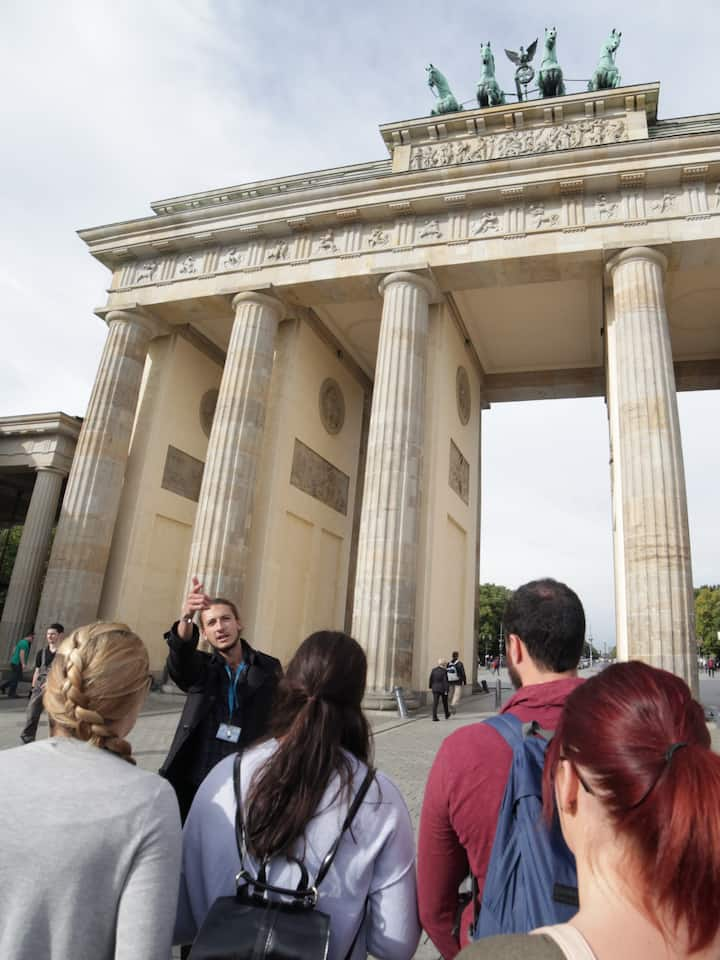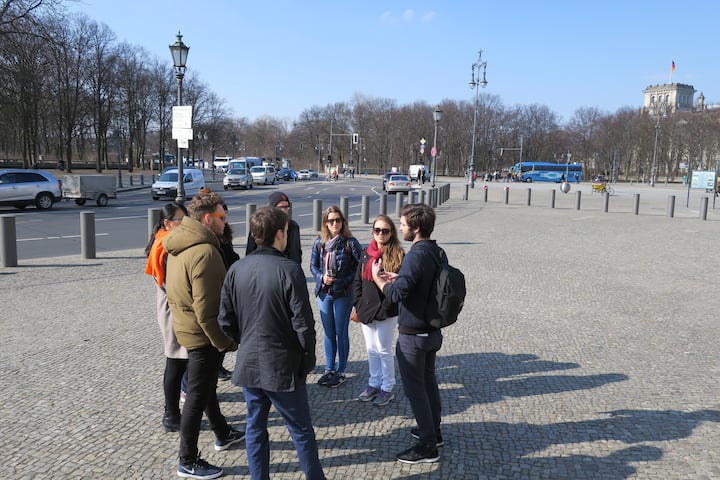Museo
Schönhausen Palace
Recomendado por 27 personas locales,
Consejos de personas locales
Schönhausen Palace (German: Schloss Schönhausen) is a Baroque palace at Niederschönhausen, in the borough of Pankow, Berlin, Germany. It is surrounded by gardens through which the Panke river runs. The palace is maintained by the Prussian Palaces and Gardens Foundation Berlin-Brandenburg and reopened to the public in 2009 after extensive restoration.
Baroque summer residence, undamaged by World War II, with sumptuous ballroom and historical details.
The only palace of Berlin which was not destroyed during WWII. The exhibition not only shows the story of the palace (home to Elisabeth Christine, wife of Frederick the Great), but also in the GDR.
[Schönhausen Palace] Schönhausen Palace, with its Palace Park, is the most significant array of monuments to be found in Berlin's Pankow District. Founded in 1220, "Nydderen Schonhusen" was first mentioned in public records in 1375. After changing feudal ownership several times, the estate and village of Buch was in the hands of the Grumbkow Family from 1684 on. They sold the Niederschönhausen estate in 1691 Frederick III, Elector of Brandenburg. (1657-1713, and from 1701 Frederick I King of Prussia.). A "small palace" that had already existed since 1664 was converted into a representative summer residence in 1691 by Chief Building Director Johann Arnold Nering (1659-1695) and in 1704 by Court Architect Eosander von Göthe (1669-1728). The palace, consisting of three wings, with its extended gardens, was a center of court life to Frederick I for as long as he lived. From 1713 on, during the reign of the "Soldier King" Frederick William I (1688-1740), Schönhausen Palace remained unused and became dilapidated. In 1740, King Frederick II (1712-1786) gave the palace and the gardens to his spouse, Elisabeth Christine (1715-1797). Living separate lives according to the king's wishes, the queen resided here in the summer months up to her death. After the devastation caused by the Seven Years War (1756 to 1763), Elisabeth Christine made more expansions to the palace. In 1763/64 master builder Johann Boumann the Elder (1706-1776) of Amsterdam gave the palace its current appearance. To the west of the palace grounds, in around 1750, Elisabeth Christine planted the "Queen's Plantation", an assorted orchard of mulberry and fruit trees. In 1763 the queen located twelve colonist families, mainly from Bohemia, to care for the Queen's gardens. In 1791 the colony was given the name "Schönholz". In 1920 the public park, "Schönholzer Heide" was created. This is the site of a Soviet monument to honor the 13,200 soldiers and officers who died during the March/April 1945 liberation of Berlin from the Nazi regime. From 1828 to 1831 garden architect Peter Joseph Lenné (1789-1866) designed the queen's rococo garden into an expansive, English-styled, landscape park. From 1840, the palace and park were the widow's residence of the Duchess of Liegnitz, nee Auguste Countess von Harrach (1800-1873). Since 1824, she had led a morganatic marriage to "the left hand" the wife of King Frederick Wilhem III (1770-1840). On the north side the Court Gardener's House was built in around 1855 in an Italian country home style. In 1920 ownership of the palace was transferred to the State of Prussia. It was used temporarily as an exhibition building for the "Northern Artist Federation" and in 1935/36 under the direction of Head Building Councillor Erich Schonert, it underwent substantial remodeling as it was used as the venue for exhibitions of the National Socialist "Reich's Collection of Fine Arts". In 1938, it was used as a depot for the majority of works from the Nazi propaganda exhibition, "Degenerate Art", which were to be sold on the world market. Schönhausen Palace withstood all of World War II practically unscathed. In 1946 it served as interim quarters for the Soviet Military Administration (SMAD). From 1949 it was converted into the official seat of the first President of the GDR, Wilhelm Pieck (1876-1960), who resided here from 1949 on. There were soon perimeter walls, sentry stations on the streets leading to the property, the Presidential Chancellery and garages. In 1960 the palace became the seat of the GDR State Council, a type of collective Head of State, and after substantial renovations in 1965, it became the GDR government's first official guest house. From December 1989 to March 1990 the GDR's "Central Round Table" held meetings in the conference building ("Berlin House", commemorative plaque). In June of 1990 it was the venue for the second round of the "Two plus Four Negotiations" by foreign ministers to set the stage for German Reunification. The palace park was reopened to the public in 1991. Schönhausen Palace and Garden have been owned by the "Stiftung Preussische Schlösser und Gärten Berlin-Brandenburg" foundation since August 1st in 2005. Due to extensive restauration the palace will be closed until 2009.
[Schönhausen Palace] Schönhausen Palace, with its Palace Park, is the most significant array of monuments to be found in Berlin's Pankow District. Founded in 1220, "Nydderen Schonhusen" was first mentioned in public records in 1375. After changing feudal ownership several times, the estate and villa…
Actividades únicas en los alrededores
Recomendado también por los habitantes locales
- Recomendado por 5 personas locales
Ubicación
1 Tschaikowskistraße
Berlin, BE







